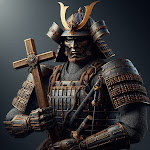Chinese Christians today hold varied perspectives on the Three-Self Patriotic Movement (TSPM) and its official churches. To understand these differences, it’s useful to examine the origins of the Three-Self idea, the establishment of the TSPM following the Communist victory, and the current functioning of grassroots official churches.
The concept of congregational autonomy—self-propagation, self-governance, and financial self-support—originated with Henry Venn, a nineteenth-century missionary concerned about foreign control over Chinese churches. The idea gained traction in the 1920s during the Anti-Christian Movement, following the May 4th movement against foreign imperialism. It became institutionalized in the early 1950s when Protestant elites, chosen by the Chinese Communist Party (CCP) for their loyalty, formed a national association alongside official religious associations for the four other recognized religions. Catholicism was categorized separately.
From its inception in the early 1950s, the TSPM raised concerns within the CCP about the political loyalties of Chinese Christians, both Protestant and Catholic, due to their ties with Western countries. Some Protestant pastors and Catholic priests had vocally criticized the Communist takeover. Consequently, the CCP established five national religious associations, but only the Christian ones were required to include "patriotic" in their titles, deepening suspicions among grassroots believers. Church leaders faced a stark choice: align with the TSPM and CCP, cease public worship, or face imprisonment. Some, like house church leader Wang Mingdao, chose imprisonment, rejecting the TSPM for its political alliances. Others, under intense public pressure, especially during the Korean War, reluctantly affiliated with the TSPM.
By the mid-1950s, TSPM-affiliated churches became increasingly politicized, with Maoist rhetoric replacing traditional sermons and churches forcibly merged, reducing the number of congregations significantly. For example, Beijing saw its churches drop from over sixty to fewer than five, causing a decline in public worship attendance.
Party-state officials staffed positions in the TSPM, closely monitoring its leaders and pressuring grassroots pastors to adhere to the CCP line. During the Cultural Revolution, all churches were closed, and TSPM pastors, like other officials, were forced to criticize each other and sent to perform manual labor.
This history explains why older Protestants in the reform era have mixed feelings about the TSPM. Despite promises from Deng Xiaoping’s era that the CCP would now accommodate religion, there was no reckoning with past persecutions, and many TSPM leaders who had participated in or suffered from Mao-era repression regained their positions. These older Protestants passed on their memories to new generations in house churches, perpetuating a narrative of the TSPM as compromised by political power.
House church leaders often view the TSPM as a tool to extinguish Christianity. They interpret actions by TSPM leaders causing inconvenience or hardship as evidence of infidelity to Christ. However, sometimes these actions stem from rivalry or the implementation of national directives, such as the 2002-2003 SARS epidemic ban on public gatherings, which house church leaders saw as contrary to biblical injunctions to meet regularly. Efforts to promote theological change, like the 1990s "theological construction" or the more recent "Sinicization" campaign, often spark suspicion and criticism from house churches.
Despite these tensions, the large number of Protestant Christians and the bureaucratic nature of the regime’s religious oversight make strict control difficult. Religious affairs authorities, often low-paid and unmotivated, prefer a laissez-faire attitude to avoid conflicts that could attract negative attention. Moreover, TSPM leaders have limited power to enforce policies on grassroots congregations, leading to considerable autonomy for local pastors.
Many TSPM pastors share values with house church leaders, especially younger leaders who did not experience the Maoist period. These younger leaders often view foreign Christians as "brothers and sisters" of one faith. Nonetheless, TSPM pastors still face official pressure, particularly on major holidays or key events, to publicly demonstrate loyalty to the party-state. These public declarations are often seen as necessary performances to satisfy authorities while continuing their core religious activities.
In recent years, under Xi Jinping’s leadership, this relative autonomy has diminished. The anti-cross campaign (2013-2015) in Zhejiang Province, restrictive national regulations from 2018, and recent reports of harassment and church closures signal a new era of persecution. Both TSPM and house churches face increasing pressure, with efforts to limit worship spaces and transform Protestant practices through Sinicization.
The future of TSPM and house churches remains uncertain as local authorities intensify efforts to control religious activities and ban house church groups that were previously tolerated.
Note:
Protestant Christianity and Catholic Christianity are two of the five approved religions in China. It’s an odd distinction to those outside of China, but it is rooted in the language. Even though Eastern Orthodoxy has no official status in China, there are still pockets of believers, especially in Heilongjiang Province.
Catholic 天主教 Tiānzhǔ Jiào
Eastern Orthodox 东正教 Dōngzhèng Jiào
Protestant 基督教 Jīdū Jiào
The main Protestant denominations are:
Anglican 圣公会 Shènggōng Huì
Baptist 浸信会 Jìnxìn Huì
Lutheran 路德会 Lùdé Huì
Methodist 卫理公会 Wèilǐ Gōnghuì
Presbyterian 长老会 Zhǎnglǎo Huì
Some important descriptors, or classifications are:
Charismatic 灵恩派 Líng’ēn Pài
Evangelical 福音派 Fúyīn Pài
Fundamentalist 基要派 Jīyào Pài
Pietist 敬虔派 Jìngqián Pài
Reformed 改革宗 Gǎigé Zōng
And finally, there are two other sects from the West that have a presence in China today, but which we would not necessarily consider to be “denominations:”
Mormon 摩门教 Mómén Jiào
Jehovah’s witness 耶和华见证 Yēhéuá Jiànzhèng
